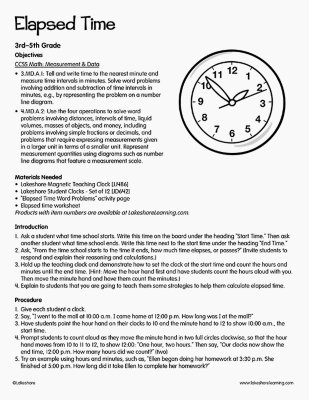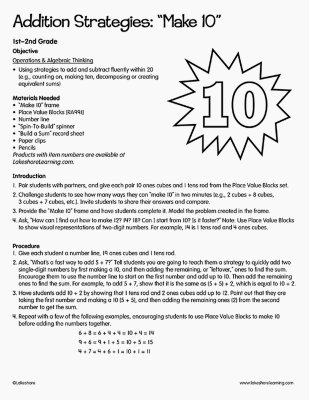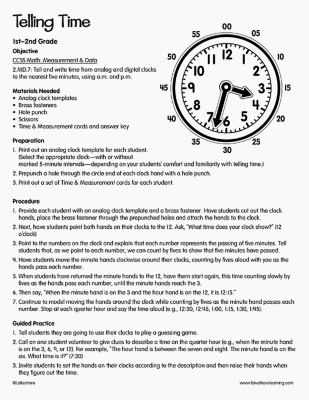
Objective CCSS Math: Measurement & Data 2.MD.7: Tell and write time from analog and digital clocks to the nearest five minutes, using a.m. and p.m. Materials Needed Analog clock templates Brass fasteners Hole punch Scissors Time & Measurement cards and answer key
View Lesson Plan

